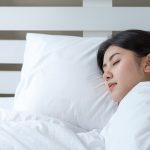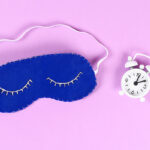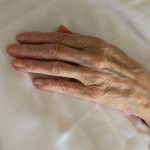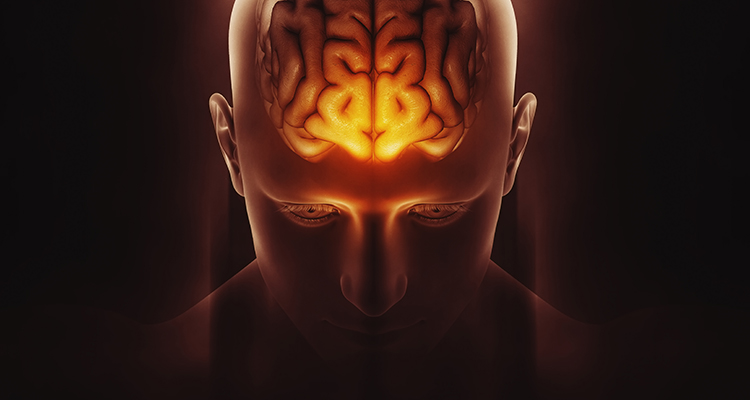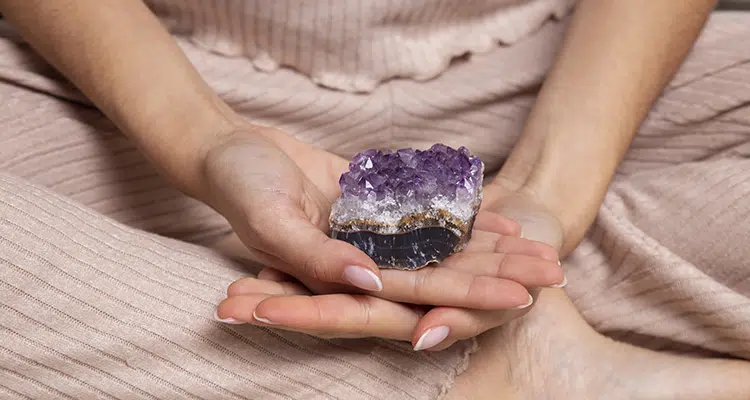Your Guide to Sleep Cycles
We all need sleep to maintain our health. In fact, sleep is such a vital part of our lives that we spend around a third of our lives asleep! It was once thought that sleep was a state of inactivity for both body and brain. However, the invention of the electroencephalogram (EEG), a non-invasive machine which can measure brainwaves, shed light on the activity that actually happens when we sleep.
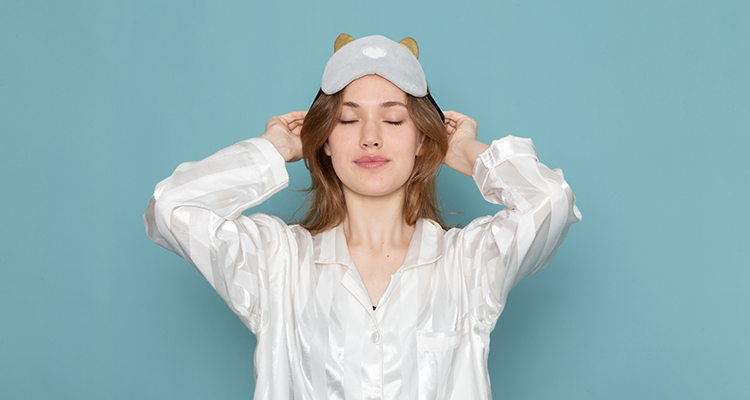
As science developed further, research has shown that our brain is actually very active when we’re asleep. This article from the Division of Sleep Medicine at Harvard Medical School explains that the brain, “is sometimes more active when we’re asleep than when we’re awake.”
So what is our brain doing while we’re asleep that makes it so active? This guide will take you through all you need to know about sleep cycles, what can disrupt them and how to regulate your sleep.
Content
What are sleep cycles?
Over the years, scientists have used brain scans and sleep studies to figure out what is happening within our brains while we’re sleeping. Although there’s still a lot to learn about the brain and how it functions, we now know that our sleep moves in cycles.
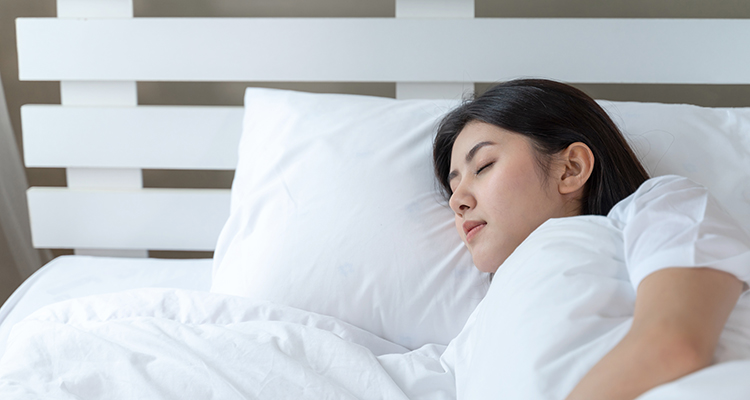
Each night when we’re asleep, our brains move between two different types of sleep: Non-rapid Eye Movement (NREM) sleep and Rapid Eye Movement (REM). The brain moves through these types of sleep in a cycle which repeats throughout the night. NREM and REM sleep each serve specific, vital purposes to help our bodies and minds stay healthy and in tune with one another.
The sequence of sleep stages
Each cycle begins with NREM sleep: we move from lighter stages of NREM sleep, progressing gradually into deeper stages of NREM sleep. With each cycle, we then ascend back through lighter stages of NREM sleep, into a lighter, more active sleep known as the REM stage. This can seem confusing but it’s important to remember that the sequence of sleep stages does not simply cycle in one direction. Like a ladder, we move down through the stages of NREM sleep (N1, N2, N3), then climb back up and down between various stages of NREM sleep to REM sleep at the top of the ladder throughout the night.
The REM stage will last slightly longer with each cycle that passes throughout the night. This article from Cleveland Clinic states that, “The first period of REM typically lasts 10 minutes, with each recurring REM stage lengthening, and the final one lasting an hour.”
Before the sleep cycle starts
Before we fall asleep, when we are very tired but have not yet drifted off, the brain is producing what’s known as beta waves. Beta waves are fairly fast brainwaves because we’re still awake. As we begin to relax and prepare for sleep, a lower band of brainwaves are produced, known as alpha waves.
NREM sleep
What is NREM sleep?
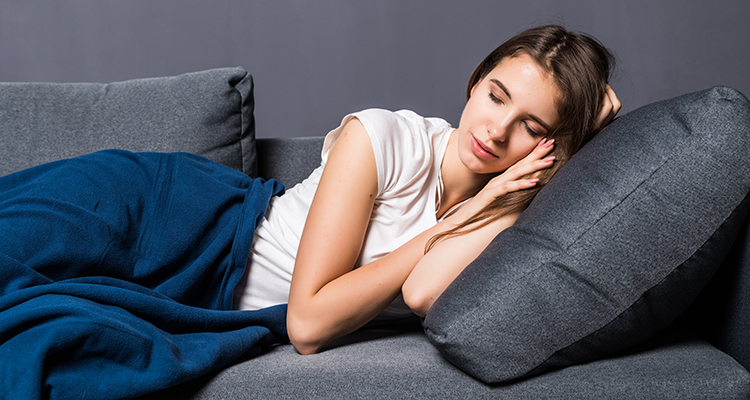
Non-rapid Eye Movement (NREM) sleep is the first type of sleep we experience. During NREM sleep our brain waves are significantly slower than when we’re awake. This means that we are more relaxed, as you might expect during sleep. However this doesn’t mean that our brain is any less active! Rather, it performs different jobs than it does when we’re awake.
What happens during NREM sleep?
A part of the brain called the thalamus allows us to consciously process stimuli (meaning anything we sense or experience in our environment, or within our bodies). During NREM sleep, the thalamus essentially ‘shuts down’ this conscious response. This allows the cortex (an area of the brain which plays a role in almost all of our neural processes) to relax.
In this relaxed state, the slow brain waves serve as messengers. They transfer short term memories from the front of the brain, and process them into long term memories in the back of the brain. This allows us to retain information and what we have learnt throughout the day. This process also allows us to have more space for new knowledge and experiences in the future
During NREM sleep our brain is also fine tuning it’s motor skills to improve our physical coordination and ability, as well as improving our mental capacity. As an individual moves through the stages of NREM sleep and enters a deeper sleep, they become less responsive to external stimuli. This means it’s much harder to wake them up!
The 3 stages of NREM sleep
The stages of NREM sleep were previously divided into four categories, but are now separated into three distinct stages named N1, N2, and N3. Let’s take a look at what these stages involve.
N1
During the first stage of NREM sleep, we begin to move between being awake and falling asleep. We will typically be in a very light sleep as our brainwaves begin to slow down. The brainwaves during the N1 stage are theta waves. This stage usually only lasts a few minutes, typically between 5-10 minutes of each cycle. This article from the National Institutes of Health explains that during this stage, “your heartbeat, breathing, and eye movements slow, and your muscles relax with occasional twitches.”

Since this stage of sleep is so light, it’s fairly easy to be woken up from. If you’re woken up during the N1 stage, you are likely to feel as though you’ve had very little sleep, or possibly as though you’ve had no sleep at all.
During this stage you may experience hypnagogic jerks. This 2020 article explains that a hypnagogic jerk is, “a sudden and strong involuntary twitch or muscle contraction, that occurs while an individual is beginning to fall asleep.” You might hear this referred to as a sleep start (because they can startle you out of sleep) or a myoclonic jerk (describing the muscles contracting and producing movement).
Often these movements will be accompanied by an image or a sensation. For example if you’ve ever felt like you were falling while you were half asleep and this woke you up, this stems from a hypnagogic jerk. It’s thought that the movement occurs first, and the brain tries to ‘explain’ the movement by creating a story or a reason for it. This is very common, with between an estimated 60 and 70% of people experiencing hypnagogic jerks.
N2
During the second stage of NREM sleep we begin to really drift off to sleep. You could think of this like the middle stage between light sleep and deep sleep. During this stage we become unaware of our surroundings and become more relaxed. Our breathing and heart rate become lower and more regular, and our body temperature drops. Our eye movements stop and brainwave activity slows down.

The N2 stage lasts around 20 minutes of each cycle. Throughout the night, it’s estimated we spend around 50% of our time sleeping in the N2 stage. During this time we display what is known as sleep spindles. Sleep spindles are bursts of rapid, rhythmic brain activity. Sleep spindles can be defined as, “distinct 12 to 14Hz waves having frequencies of 11 to 16 Hz (most commonly 12 to 14 Hz) with the duration of greater than equal to 0.5 seconds, usually maximal in amplitude in the central derivations.”
This sounds really complicated, but really sleep spindles are simply bursts of activity that can be seen on an EEG scan. They’re called that because of how they look when presented on the scan. It’s thought that sleep spindles occur to keep us in a peaceful state when we’re sleeping, and allow us to move into the next stage of the sleep cycle.
People who produce more sleep spindles during this stage are less likely to be woken up, therefore it’s thought they experience a better quality of sleep. Interestingly, sleep spindles don’t develop until a baby is over six weeks old. As we reach adulthood and go through the aging process, we produce fewer sleep spindles, which makes us more likely to be woken up by external noises, and less likely to have a restful sleep.
Scientists believe that sleep spindles are also linked with information and long term memory formation. Research has shown that the amount of sleep spindles we display is increased after a day of learning. Likewise, after a night of frequent sleep spindles, performance of a recently acquired skill is increased. This study states that, “Recent evidence suggests the spindle is highly correlated with tests of intellectual ability (e.g.; IQ tests) and may serve as a physiological index of intelligence.” This would explain why if you’re not sleeping well, it’s much harder to stay focused, to pay attention to the task at hand, and to function cognitively in general.
We also display what’s known as K complexes. K complexes can be defined as, “the occurrence of a complex pattern of negative sharp wave immediately followed by a positive wave (V-shaped) standing out from the background EEG, lasting =0.5 seconds, and is most prominent in the fronto-central derivations.”
Again this sounds really complicated, but K complexes are simply large waves displayed on EEG graphs, as opposed to the quick bursts of activity in sleep spindles. K complexes react to external stimuli while we’re sleeping. So if you heard a loud noise outside but it didn’t wake you up, on a EEG graph you would be able to see a K complex in reaction to the noise. Sleep spindles often follow K complexes, to work to keep us in that peaceful state we mentioned so we stay asleep. K complexes develop after a child is five months old.
It’s thought that the role of K complexes is to alert us to external threats when we’re sleeping. Scientists theorize that they help us to stay asleep if the external stimuli doesn’t indicate an imminent danger. So if we detected a loud enough disturbance we would wake up and be able to deal with the situation at hand, but if it was just the sound of a car door closing outside for example, K complexes would help us to stay asleep. Scientists also think that K complexes play a role in helping us to process and form memories while we’re sleeping, just like sleep spindles.
N3
The third stage of NREM sleep is when we are in the most relaxed, deepest state of sleep. When we’re in the N3 stage, our brainwaves are delta waves, the second slowest type of brainwave. Due to these delta waves, this stage is sometimes referred to as ‘delta sleep’, or ‘slow-wave sleep’.
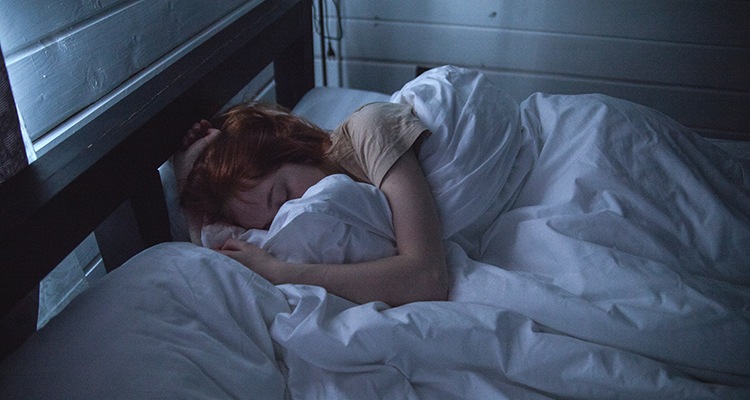
During this stage our muscles are relaxed; our blood pressure drops, and our breathing rate and heart rate reduce to their lowest levels.Sleep spindles and K complexes may be displayed in the N3 stage, but they are more prominent in the N2 stage.
N3 sleep is needed for us to feel refreshed and rested in the morning. During this stage, the human growth hormone is released so that our body can heal and restore itself. Many biological processes are regulated during this time. When we’re in this deep sleep, it becomes harder to be woken up. Typically we will have longer periods of N3 sleep in our cycle in the first half of our nights sleep.
During this stage of sleep some people experience parasomnias, which can be defined as, “abnormalities or undesirable behaviors that occur during transitions between sleep stages including nightmares, sleepwalking, and bedwetting (sleep enuresis).”
REM sleep
What is REM sleep?
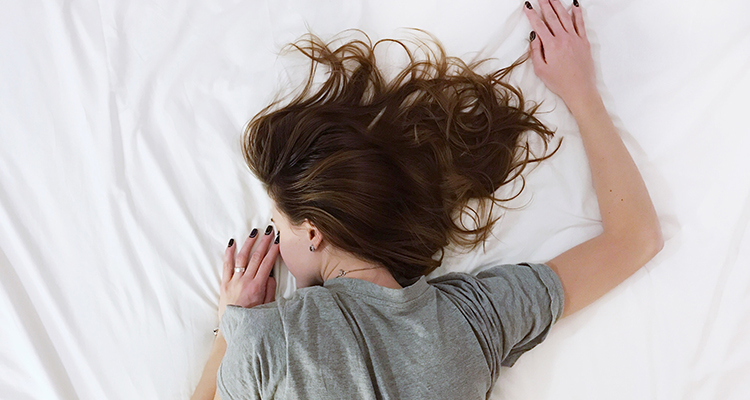
During Rapid Eye Movement (REM) sleep our brainwaves are faster than in NREM sleep, acting more like they do when we’re awake. Although the body is still in a restful state, the mind is more active and is now able to pick up on internal stimuli. During REM sleep our eyes will typically dart back and forth rapidly while they’re closed, giving this stage of sleep it’s name. REM sleep should make up roughly 25% of our sleep cycle, and usually happens after 90 minutes of being asleep.
What happens during REM sleep?
Since the brainwaves we experience during REM sleep are closer to that of when we’re awake, this means that our biological processes are increased. Our heart rate and blood pressure rises, and often our breathing rate will become much faster and even irregular (this is normal and not dangerous). We often do a lot of our dreaming when we’re in REM sleep.
During REM sleep our mind also connects what we’ve learnt and experienced with our thoughts and skills, to allow us to come up with new ideas and gain a deeper insight into our lives. This could be why we often wake up with a good idea or a creative thought in the morning or during the night!
During REM sleep our leg and arm muscles are temporarily paralysed. This can sound scary but simply stops us from moving our limbs and ‘acting out’ any dreams we’re having. It’s at this stage that people can experience night terrors, meaning they wake up while their muscles are still paralysed and feel that they are ‘pinned’ to the bed. This isn’t particularly common, and it’s important to remember that this paralysis is temporary and is actually a safety response. It stops us from falling out of bed or injuring ourselves while we’re dreaming.
The regulation of sleep
When we sleep is primarily regulated by two systems which determine when we’re awake and when we go to sleep. This article from Harvard Medical School explains that, “Two interacting systems—the internal biological clock and the sleep-wake homeostat—largely determine the timing of our transitions from wakefulness to sleep and vice versa.”

The circadian rhythm
The circadian rhythm is like our internal body clock, running 24 hours a day to control when we’re awake and when we fall asleep. An area of the brain called the suprachiasmatic nucleus uses the amount of light in our environment to control our circadian rhythm. Other environmental factors are also used to detect when we should be asleep and awake. This area of the brain sends out messages to activate the release of a hormone called melatonin which moves through our bloodstream and controls when we’re ready for sleep.
Melatonin begins to be released in the evening to start making us feel more ‘tired’ and to get our bodies and minds ready for sleep. Throughout the night as we sleep, the amount of melatonin being released is gradually reduced, to get us ready to wake up in the morning.
We all have different internal rhythms, which means that some of us might feel more awake in the morning and others may be more alert in the evening. This can be due to our genes and other factors within our environment. Unfortunately this can make it tough for those who are working during the day, but are more awake at night. Our circadian rhythms can also be difficult to adjust to for those who do shift work. However there are ways to help optimize the times when you need to sleep individually, to keep you functioning and working in a way that suits you, which we’ll discuss in later articles.
Sleep-wake homeostasis
When we’re awake a chemical called adenosine is released and gradually builds throughout the day. As more adensonie builds, we become increasingly tired throughout the hours we’re awake. This prepares us for sleep. Once you’re asleep, levels of adenosine gradually reduce, until the levels are at their lowest ready for you to wake up and begin your day. Then the cycle begins all over again.
Working together
These two systems work together to regulate the hours that we’re awake and ready for action, and to make us tired enough to fall asleep. The circadian rhythm releases chemicals in the early evening throughout the night to maintain sleep and get us ready to wake up, while adenosine is released throughout the day to prepare us for sleep.
As these cycles work together you should experience your optimum energy around the middle of the day, and the biggest urge to sleep later in the night, often around 11pm. Together they regulate our body clock and keep it functioning properly.
Dreaming: during which stage and why?
We all dream, even if we don’t remember our dreams! Interestingly, the exact reason for dreaming is not known. Some scientists believe dreaming can help us process our emotions. Some people believe their dreams have a spiritual meaning or allow them to work through problems. Science shows that during REM sleep the chemical noradrenaline is not produced, which allows us to process difficult memories without being overcome with panic or distress. Whatever the reason, each one of us dreams for around two hours each night.

Sometimes dreams may be pleasant, funny or random. At times, dreams may be frightening, which we often name ‘nightmares’. It’s thought that what we experience throughout the day and what’s on our mind, can influence what we dream about. For example, if an individual has high anxiety or is particularly worried about something, it’s likely this will crop up in their dreams. More recent research shows that dreams can happen in any stage of sleep, but it appears that dreams are more vivid (meaning they seem more realistic and tangible) during the REM stage of sleep.
Biological factors
Brain structures involved in sleep
There are a number of brain structures involved in the sleep process and each have specific roles they fulfil to keep everything functioning as it should.
- HypothalamusThe hypothalamus is a very small structure within the brain which, among many other roles, has nerve cells which help to control our arousal and sleep states. Arousal states refer to any state within which we are awake and alert.
- Suprachiasmatic nucleus (SCN)Inside the hypothalamus is the suprachiasmatic nucleus (SCN). The SCN contains thousands of really small cells which detect information about light passed on from our eyes.
- Pineal glandOnce the SCN has detected the level of light we’re seeing, it sends messages to the pineal gland. The pineal gland produces the hormone melatonin which helps to regulate our circadian rhythm.
- Basal forebrainCells within the basal forebrain release adenosine, the chemical which helps to regulate sleep-wake homeostasis.
- Brain stemThe brain stem is at the very base of the brain, basically connecting our spinal cord to our brain. It communicates with the hypothalamus and they work together to send out a chemical which helps to regulate and reduce activity within the brain’s arousal centres. This reduced arousal activity helps us to sleep.
The brain stem also plays a vital role in REM sleep. The state of paralysis we mentioned earlier which occurs during REM sleep is controlled by the brain stem. It sends out signals to relax the muscles and reduce movement within our limbs during this stage of sleep.
- Cerebral cortexThe cerebral cortex processes short term memory into long term memory. During REM sleep it works in conjunction with the thalamus to form and store memories.
- ThalamusDuring NREM sleep, the thalamus reduces activity so that we can stop responding to external stimuli. During REM sleep, the thalamus passes on messages to the cerebral cortex to form memories and process information.
- AmygdalaDuring REM sleep the amygdala becomes particularly active, which is thought to be because it regulates and processes our emotions so that we’re more emotionally stable when we’re awake.
Neurotransmitters involved in sleep
There are groups or ‘clusters’ of neurons within various parts of the brain which become more active as we prepare for sleep. These neurons use chemical messengers known as neurotransmitters to turn off or reduce activity within cells which promote arousal, therefore preparing us to relax. It’s also the job of these neurons to send neurotransmitters which reactivate these cells when it’s time for us to wake up and start our day.
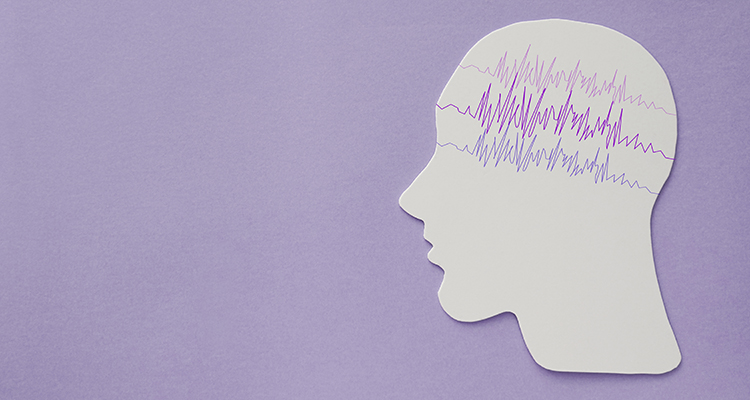
Neurotransmitters which are involved in the sleep process include:
- Gamma-aminobutyric acid (GABA)
- Norepinephrine
- Orexin
- Acetylcholine
- Histamine
- Adrenaline
- Cortisol
- Serotonin
Genes involved in sleep
Studies have identified specific genes which make us more likely to struggle with sleep, or make us more likely to sleep deeply. Genes also play a part in how much sleep we need to feel energized and active during the day. This article from the National Institutes of Health explains that findings show, “genes that control the excitability of neurons, and “clock” genes such as Per, tim, and Cry that influence our circadian rhythms and the timing of sleep.”
This research suggests that we may inherit sleep disorders from our family. Research is ongoing and as more knowledge is gained, this can allow scientists to come up with more effective solutions to help us all get the sleep we need.
How much sleep do you need?
Sleep guidelines by age
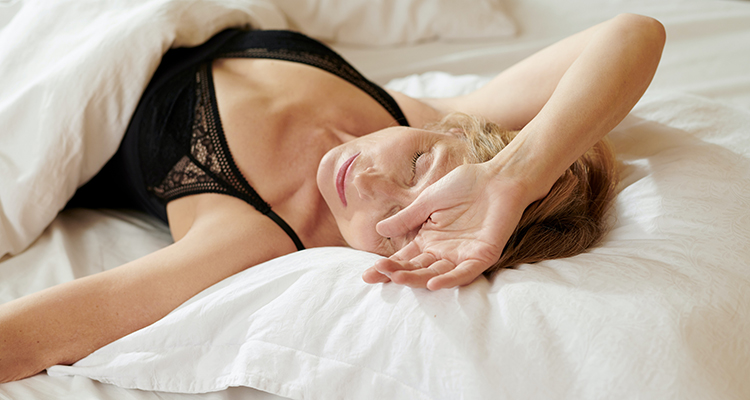
Since we grow and develop over time, we have different energy requirements. Therefore how much sleep we need depends largely on our age. The National Sleep Foundation recommend the following amount of sleep for each age category:
- Birth to 3 months: 14 to 17 hours
- 4 to 11 months: 12 to 15 hours
- 1 to 2 years: 11 to 14 hours
- 3 to 5 years: 10 to 13 hours
- 6 to 13 years: 9 to 11 hours
- 14 to 17 years: 8 to 10 hours
- 18 to 64 years: 7 to 9 hours
- 65 years and older: 7 to 8 hours
Of course these are rough guidelines and other factors often need to be taken into account, such as how active you are during the day, the hours you work, any mental health and physical health considerations and more. Aside from this, we’re all individuals and just as our other needs vary, so do our sleep requirements. What works for one person in the same age bracket and within a similar situation, may not work for someone else. It’s about figuring out what’s right for you.
Working out your ideal ‘bedtime’
You need to figure out what is going to work for your individual requirements. As we mentioned earlier, when figuring out a ‘bedtime’, you should account for around 15 minutes or more to fall asleep. You should then try to get the right amount of sleep for your age bracket, for example if you’re an adult between 18 and 64 years old, seven to nine hours of sleep (five and six sleep cycles) is optimum.
You should start by figuring out when you need to start waking up, and leave enough time between your alarm going off and actually feeling awake so you can be active. As with falling asleep, you could leave around 15 minutes to allow yourself to reach a fully awake state before you start your day. Once you’ve figured out what time you need to get up, you can work backwards from there to figure out a ‘bedtime’ which will allow you to get the amount of sleep you need.
For example, if you were starting work at 9 am, and it takes you an hour and half to get ready and travel to work, you would need to set your alarm for 7.15am (accounting for your 15 minutes to fully wake up). Therefore your ‘bedtime’ would ideally be between 10pm and 12pm.
It’s important to be consistent in the time you’re going to bed and waking up to help your body clock get into a routine and regulate itself optimally. Consistency is likely to result in more restful, restorative sleep in the long term.
What happens if you don’t get enough sleep?
Sleep is vital to keep our minds and bodies working properly. It affects every process in our body, so it’s understandable that if we don’t get enough sleep, it can have many negative effects. Some of these effects include:
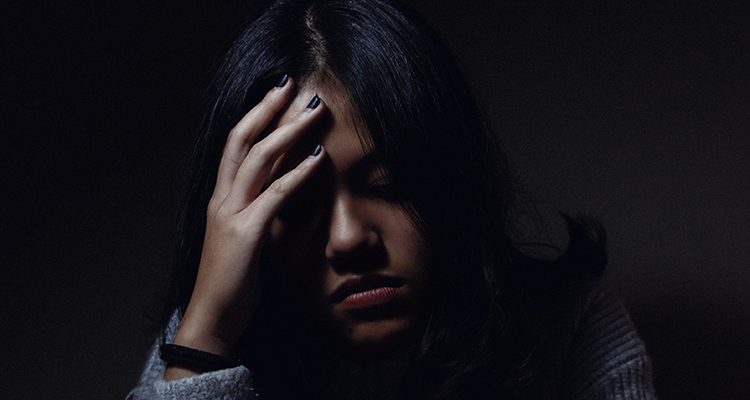
- Increased risk of developing physical illness: sleep helps to maintain our immune system, our blood pressure, cardiovascular health, metabolism and more.
- Increased risk of mental illness: sleep helps us to keep our mood stable and enhances our state of general wellbeing. When this is disturbed, it can contribute to mental illness.
- Problems with memory formation: both short and long term memory can be affected.
- Difficulty concentrating
- Reduced creativity
- Issues with decision making
- A buildup of toxins in the brain: This article from the National Institutes of Health explains that, “recent findings suggest that sleep plays a housekeeping role that removes toxins in your brain that build up while you are awake.”
- Increased risk of weight gain
- Decreased sex drive
- Poor balance
What happens if a sleep cycle is interrupted?
If you wake up during a sleep cycle, it’s certainly not dangerous and it doesn’t take away from the quality of sleep you’ve already had throughout the night. However if a sleep cycle is interrupted, you’re less likely to feel re-energized and alert. If you wake up naturally (without an alarm) this will happen at the end of a sleep cycle. This will mean you’ll be more awake, full of energy and ready for the day ahead.
Unfortunately for most of us, we need to get up at a specific time to fulfil responsibilities and make the most of our day. Therefore waking up naturally is often unrealistic. However, by working out your ideal bedtime as we discussed earlier, you can try to wake up as close to the end of a cycle as possible, maximising the benefits and reducing that feeling of being unable to drag yourself out of bed.
What can affect sleep cycles?
Age
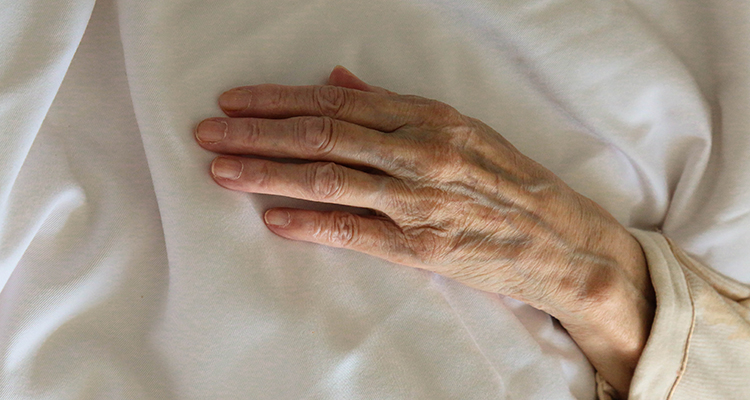
Sleep cycles can differ depending on our age. In newborn babies, the REM stage typically starts the sleep cycle rather than NREM stage. The length of sleep cycles in newborns is also significantly shorter than in adults, at between 50 to 60 minutes per cycle. Babies typically have more slow-wave (N3) sleep than adults; this slowly decreases with age once we reach adulthood. Newborns sleep much more frequently than adults as we mentioned earlier, with circadian rhythms only beginning to develop at around three months old.
Sleep requirements gradually decrease as the child grows up and sleep preferences begin to develop: such as being a night owl (feeling more awake at night) or a morning lark (feeling more alert in the morning). Napping begins to decrease as children age and they begin to go to school.
Older children may be more prone to nightmares and other issues with maintaining sleep, perhaps because they begin to have more on their mind as they develop. Some research suggests that children have more REM sleep than teenagers.
As children reach their teenage years, they may struggle more to get the amount of restful sleep they need, for a variety of reasons. The amount of slow-wave sleep (N3) declines while the amount of N2 sleep increases. This book explains that, “These changes are likely in part due to pubertal and hormonal changes that accompany the onset of puberty.” The amount of REM sleep can also decrease depending on the consistency of the individuals sleep schedule.
As we reach adulthood, we tend to be gradually more consistent in our ‘bedtimes’, going to bed earlier and waking up earlier. There are no definitive scientific answers as to why this is, however theories suggest our circadian rhythm could shift slightly. Perhaps this is an increased sensitivity to light, as some studies suggest, or perhaps it’s down to environmental factors such as having more responsibility and being more active during the day.
The book we mentioned explains that once we reach adulthood, “SWS (slow-wave or N3 sleep) declines at a rate of about 2 percent per decade.” Since we’re at our deepest, more restful sleep during N3 sleep and are least likely to wake up, this means we’re more likely to be disturbed from our sleep as we age.
As we pass the age of 60, sleep becomes even more difficult. In fact around 43% of elderly people experience difficulties with sleep. The need for sleep does not decline, but unfortunately the likelihood of a restful sleep does. Physical illness and other environmental factors, combined with the decreased N3 stage of sleep, can all contribute to this problem. This can have a significant detrimental impact on quality of life.
Daytime activity
How active we are during the day can significantly affect our sleep. If we are very inactive for long periods of time during the day, we’re unlikely to be tired enough to sleep at night. If we’re active mentally and physically, by the time we’re ready to go to bed our mind and body will be more ready for sleep. This article from The National Sleep Foundation explains that, “Physical activity improves sleep quality and increases sleep duration. Exercise may also bolster sleep in other ways, because it reduces stress and tires you out.”

Environmental conditions
We know that light controls our circadian rhythms: this evolved in reaction to daylight. However since we discovered electricity and the lightbulb, we are now exposed to a great deal of artificial light. This change in light sources can understandably affect our sleep patterns.
The sleep environment can also play a significant part in our ability to sleep, including the temperature within the bedroom, how comfortable and calming the bedroom is, noise within and outside of the house, and potentially a partner’s sleeping habits.
Medications
Research shows that a variety of medications can have an affect on sleep. Beta blockers can increase tiredness during the day, and decrease REM and slow-wave sleep. Likewise Alpha blockers can decrease REM sleep and increase fatigue during the day.
Antidepressants have been shown to affect sleep but more research is needed, as the long term effects are still unknown. It’s thought that some antidepressants can cause insomnia, while others can contribute to increased tiredness. Some research suggests antidepressants can reduce REM sleep. These are only a few of the medications which could potentially affect sleep cycles.
Shift work
Many jobs involve shift work, meaning that we’re working throughout the night or long hours, and trying to sleep during the day or late at night. This can confuse our body clock, making it harder to sleep during the day when it’s light, and contributing to tiredness and other negative effects when we’re trying to function at night because our body is telling us that we should be asleep. This report from the Division of Sleep Medicine at Harvard Medical School states that, “Half of all night shift workers regularly report nodding off and falling asleep when they are at work.”

Recent sleep schedule
When our sleep schedule is disrupted, for example if we recently missed a night’s sleep or had a few nights of very restless sleep, this can disrupt our usual sleep cycles. Often this can result in longer, deeper stages of NREM sleep.
Food and drink
What we eat and drink can influence how we sleep. If we consume alcohol before we go to bed, this can prevent REM sleep throughout the beginning of the night. As the effects of the alcohol wear off, this REM sleep can return later on during our night’s sleep. Unfortunately even when REM sleep returns later in the night, it can lead to us waking up more frequently.
When we consume caffeine, this can dull the effects of the adenosine we mentioned earlier, making us feel more awake. However it doesn’t stop the adenosine building: it just stops you ‘feeling’ it. So when the caffeine wears off, this can make you even more tired. Caffeine can remain in your system for 5 to 7 hours after you’ve consumed it, so if you consume it later in the day, it has the potential to disrupt your sleep cycles.
Physical health
There are many physical health conditions which can make it harder to fall asleep, and often lead to disrupted sleep throughout the night. These can include gastrointestinal problems like acid reflux, endocrine problems, breathing difficulties such as asthma, and much more.
Often chronic pain conditions can cause what is not so fondly known as ‘painsomnia’.
I personally live with arthritis and fibromyalgia, which can make it harder to sleep. The fatigue experienced during the day is then markedly worsened, making it harder to function and throwing my body clock out of balance. Those with chronic pain often have overactivity in certain areas of the brain which can make it harder to relax, and therefore harder to achieve deeper states of sleep. This report explains that, “pain and discomfort tend to limit the depth of sleep and allow only brief episodes of sleep between awakenings.”
Mental health
When we are experiencing a lot of stress and we’re lying in bed, things can play over and over in our mind and it can be hard to ‘quiet it down’. This alone can make it tough to get to sleep. When we are struggling with mental illness (such as depression or anxiety) or even a great deal of emotional stress in our lives, it can keep us stuck in a state of ‘fight or flight’. This means that we’re tense and prepared for action. It’s easy to see how this would be a difficult state to achieve sleep within.

How to regulate your sleep cycles
It’s all well and good knowing how important sleep is and understanding sleep cycles, but how does this translate practically? There are plenty of ways you can learn to increase your chances of sleep and optimize your sleep cycle, many of which we’ll go into in later articles. Some top tips for getting started include:

- Introducing a regular ‘bedtime’ and ‘wake’ time as we discussed earlier.
- Giving yourself time to ‘wind down’ before bed. This can include turning off electronics, limiting stress and introducing some relaxation techniques.
- Exercising (ideally a few hours before sleep) to tire your body and mind out.
- Increasing your time in sunlight during the day to help to regulate your circadian rhythm.
- Reducing or eliminating naps during the day.
- Limiting caffeine, alcohol or nicotine before bed as these are stimulants and can interrupt sleep.
- Making your bedroom a calming, peaceful space which is optimized for sleep.
- Relaxing in bed, for example reading a book or practicing mindfulness.
References
Kendra Cherry, (2019), “The 4 Stages of Sleep (NREM and REM Sleep Cycles)”. Very Well Health.
National Institute of Neurological Disorders and Stroke, (2019), “Brain Basics: Understanding Sleep”. National Institutes of Health.
Brandon Peters, MD, (2020), “What Is a Hypnagogic Jerk and What Causes Sleep Starts?”. Very Well Health
Nayak CS, Anilkumar AC. (2020), “EEG Normal Sleep.” StatPearls, Treasure Island (FL): StatPearls Publishing
Stuart M Fogel, Carlyle T Smith, (2011), “The Function of the Sleep Spindle: A Physiological Index of Intelligence and a Mechanism for Sleep-Dependent Memory Consolidation.” Neurosci Biobehav Rev
. 2011 Apr;35(5):1154-65
Harvard Medical School, (2007), “Natural Patterns of Sleep”. Division of Sleep Medicine.
Cleveland Clinic, (2020), “Sleep Basics”.
Matthew Walker PhD, (2019), “Why We Sleep: Unlocking the Power of Sleep and Dreams”. Skool of Happiness Pte Ltd.
Tuck.com LLC, (2020), “Parasomnias”.
James Roland, (2019), “How to Calculate When You Should Go to Sleep”. Healthline.
American Sleep Association, (2020), “Stages of Sleep: The Sleep Cycle”.
Netherlands Institute for Neuroscience – KNAW. (2019). “REM sleep silences the siren of the brain: Restless REM sleep a risk for many mental disorders?.” ScienceDaily
Johns Hopkins Medicine, (2020), “Sleep/Wake Cycles”.
Max Hirshkowitz, PhD, Kaitlyn Whiton, MHS, Steven M. Albert, PhD, et al, (2015), “National Sleep Foundation’s sleep time duration recommendations: methodology and results summary”. Sleep Health, Volume 1, Issue 1, P40-43
Institute of Medicine (US) Committee on Sleep Medicine and Research; Colten HR, Altevogt BM, editors.(2006), “Sleep Disorders and Sleep Deprivation: An Unmet Public Health Problem.” Washington (DC): National Academies Press (US)
National Sleep Foundation, (2020), “How Exercise Affects Sleep”.
Harvard Medical School, (2007), “External Factors that Influence Sleep”. Division of Sleep Medicine.

